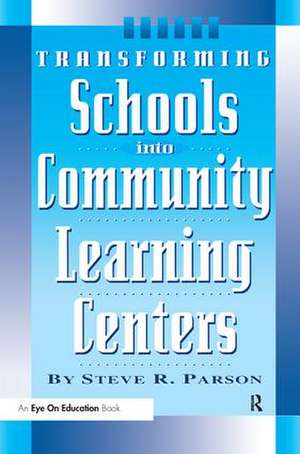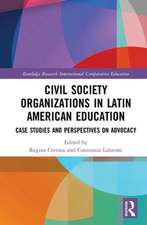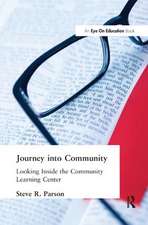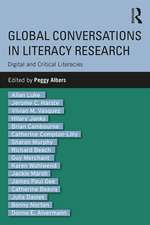Transforming Schools into Community Learning Centers
Autor Stephen Parsonen Limba Engleză Hardback – 12 iul 2017
Preț: 625.03 lei
Preț vechi: 839.00 lei
-26% Nou
Puncte Express: 938
Preț estimativ în valută:
119.62€ • 123.93$ • 99.83£
119.62€ • 123.93$ • 99.83£
Carte tipărită la comandă
Livrare economică 21 martie-04 aprilie
Preluare comenzi: 021 569.72.76
Specificații
ISBN-13: 9781138432734
ISBN-10: 1138432733
Pagini: 192
Dimensiuni: 152 x 229 mm
Greutate: 0.45 kg
Ediția:1
Editura: Taylor & Francis
Colecția Routledge
Locul publicării:Oxford, United Kingdom
ISBN-10: 1138432733
Pagini: 192
Dimensiuni: 152 x 229 mm
Greutate: 0.45 kg
Ediția:1
Editura: Taylor & Francis
Colecția Routledge
Locul publicării:Oxford, United Kingdom
Public țintă
Professional Practice & DevelopmentCuprins
Chapter 1 Transforming Our Schools; Chapter 2 Community Learning Centers; Chapter 3 Sharing the Power; Chapter 4 Partnerships with Families; Chapter 5 Teaching and Learning with the Community; Chapter 6 Community Technology Centers; Chapter 7 The Collaborating Community; Chapter 8 Developing Community; Chapter 9 Year-Round Scheduling; Chapter 10 Family Literacy and Lifelong Learning; Chapter 11 Leadership in the Community Learning Center;
Notă biografică
Steve Parson is Associate Professor in the Department of Educational Leadership and Policy Studies at Virginia Tech. He heads an initiative to develop an Urban Institute for Partnership Development with the National Association of Partners in Education, the ERIC Clearinghouse on Urban Education, Columbia University, and Virginia Tech.Formerly a Mott Intern with the Western Michigan University Community Education Leadership Program, he has served as president of the National Community Association. He is also a consultant and trainer in the field of community education, educational partnerships and educational reform. Table of Contents
Descriere
The use of simulation models is a necessity and also an aid in the decision-making process in sustainable agricultural systems. Organizing the experimental knowledge of crop production systems without the book keeping and deductive methods of mathematics is very difficult. This book aims to guide readers in the process by which the properties of the systems can be grasped in the framework of mathematical structure with minimal mathematical prerequisites. The objective of this book is to help the undergraduate, graduate and post-graduate students in the disciplines of agronomy, plant breeding, agricultural meteorology, crop physiology, agricultural economics, entomology, plant pathology, soil science and ecology (environmental science). This book may also be useful for administrators in various agricultural universities in order to direct research, extension and teaching activities. Planners at national and state levels may also benefit from this book.







